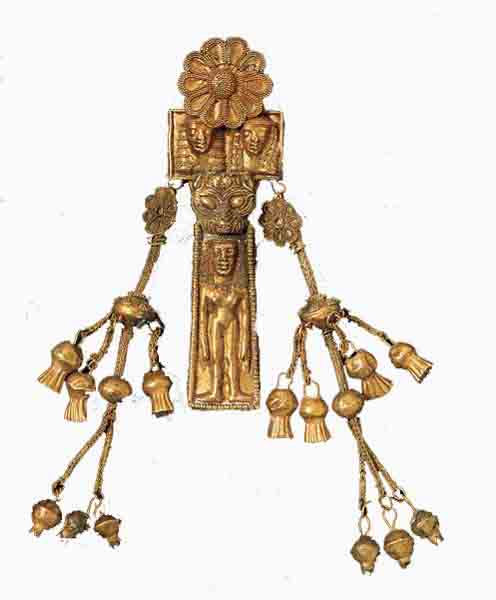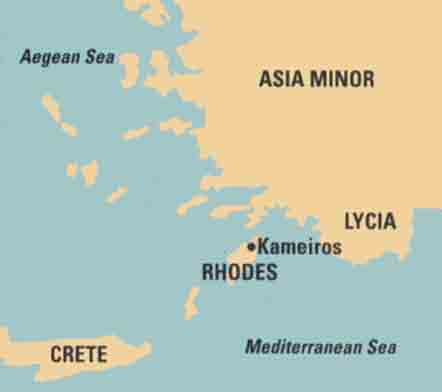
Golden, pomegranate-shaped bells dangle from braided chains on this beautifully crafted seventh-century B.C. pendant. Discovered in a cemetery at Kameiros, on the island of Rhodes, the pendant was hammered out of thin pieces of electrum, a naturally occurring compound of gold and silver. At the top of the pendant sits a rosette, a popular decorative motif throughout the ancient Near East. The chains, bells and spheres hang from smaller rosettes attached to the sides of the pendant.

The body of the pendant consists of a short horizontal piece bearing two female faces and a longer vertical piece featuring a nude woman; the two pieces are connected by the head of a panther. The detailed, patterned hair, triangular faces and slightly curved mouths of the two women on the upper plaque are typical of a seventh-century B.C. Greek style known to scholars as “Daedalic” because it is frequently found on Crete, where the mythical craftsman Daedalus built the labyrinth for the Minotaur and later escaped from King Minos by flying on artificial wings.
The craftsman who fashioned this pendant made use of the technique known as granulation: Tiny balls of electrum mark the hair of the nude woman and outline both her necklace and the face of the panther. The technique was also used on the rosettes and around the tops of the spheres holding the bells.
The prominence of the nude woman and the numerous pomegranates—a fruit noted for its many seeds—suggests that the pendant was a fertility symbol.
Already a library member? Log in here.
Institution user? Log in with your IP address.

